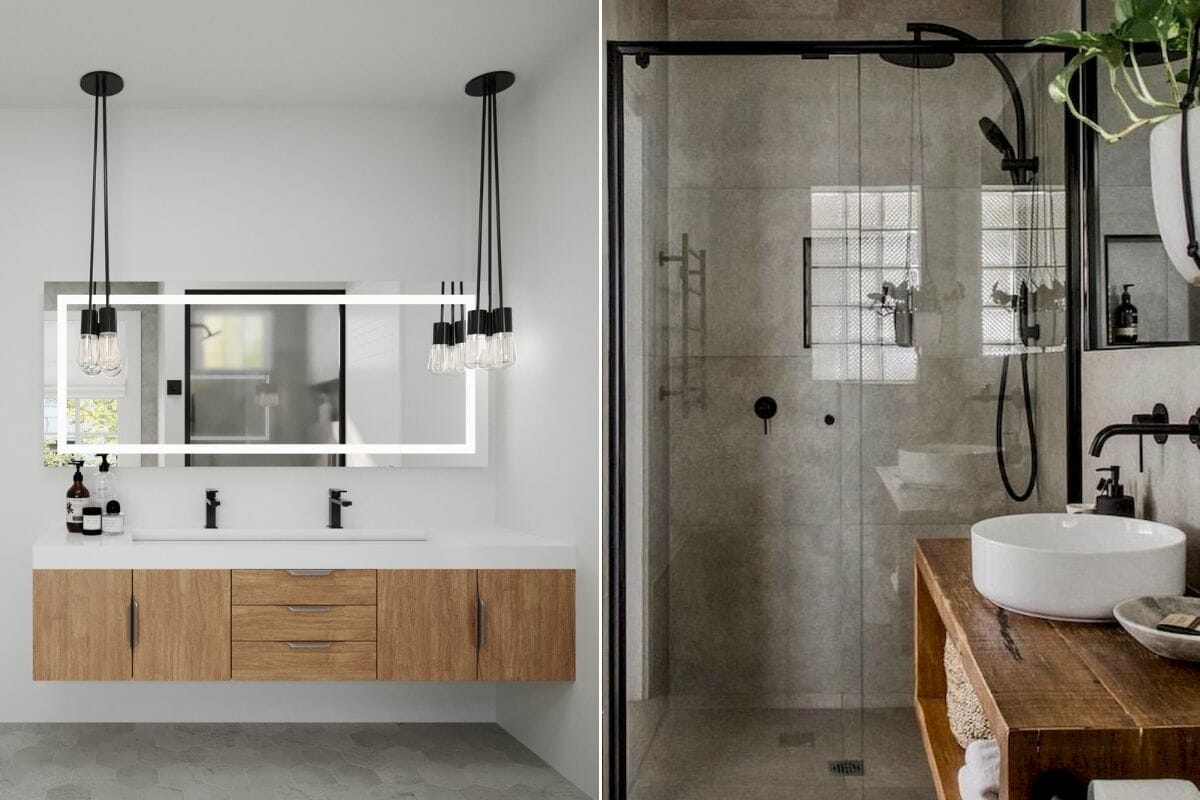The bathroom vanity is one of the modifications that can have the biggest influence on bathroom remodeling. The vanity acts as the bathroom’s visual center while offering a practical area for shaving, applying makeup, brushing teeth, and other everyday duties.
When contemplating an upgrade or rebuild, you should undoubtedly think about how your vanity looks. You may choose the choice that best suits your vision for your bathroom by being aware of the differences between several bathroom top modern vanities. Still, it also could be useful to consider the materials utilized to make the vanity cabinet.
- Particle Board
Wood shavings bonded together, warmed up and compressed into pencil-thin sheets make up the composite sheet material known as particle board. The strength of particle board can vary depending on the particles’ size and the sheets’ density. Still, it is generally thought too weak to withstand a load of solid veneer materials like quartz or ferocious stones.
Vanities made of particle board should have countertops made of lighter materials, such as acrylic. Particle board is more susceptible to heat, steam, and water than other bathroom vanity materials.
- Medium Density Fiberboard Washroom Vanities
An excellent “middle of the road” alternative for bathroom vanity is MDF (medium density fiberboard). Despite being constructed similarly to particle board, it is dense and stiff, making it stronger than particle board.
MDF is made from wood scraps that have been crushed at higher temperatures and for a longer period. MDF can swell when water exposure; thus, a strong sealant or high-quality lacquer paint must be used to protect the surface.
- Plywood
A sheet of plywood is made of wood veneers that have been adhered in multiple layers or sheets compressed together. The grade of the plywood might vary depending on the thickness and the caliber of the materials utilized, just like other manufactured wood products.
Top-quality plywood will be sturdy and long-lasting, unlike lower-grade plywood, which uses softer timbers or has gaps between layers. It is less likely to be harmed by steam/vapor or the occasional sprits of water since the final plywood are compact, making it water-resistant.
- Sturdy Wood
In the end, the sort of wood used in building is what makes the biggest difference. Solid hardwood and 100% natural wood are the two kinds of solid wood vanities. Bathroom vanities are frequently made of oak, widely regarded as the heavy-duty wood for vanities.
- Aluminum Alloy (Stainless Steel)
Any bathroom benefits from the sleek, contemporary appearance that stainless steel offers. Rust and mildew cannot grow on stainless steel. In addition to being resistant to heat and scratches due to its elemental makeup, stainless steel is frequently utilized for kitchen appliances. Natural waterproofness exists in stainless steel.
Conclusion!
Selecting the right vanity material is essential to ensure that the vanity’s look and feel perfectly suits your bathroom décor. Top modern vanities are made of materials that are long-lasting, durable and require minimal maintenance. So, check the materials first before deciding which design and vanity form to buy in 2022.

